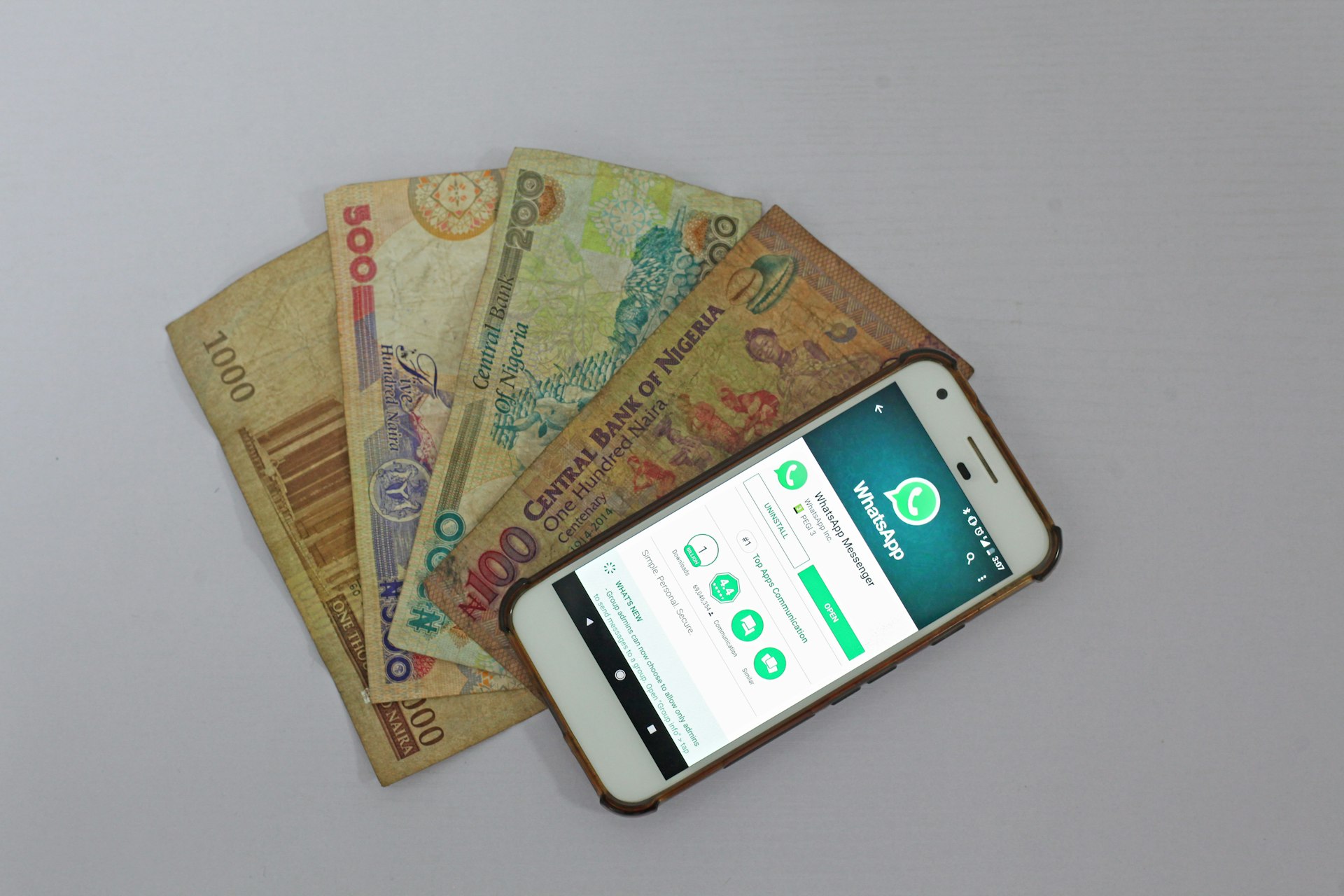Digital Wallets: Transforming Transactions and Global Economic Opportunity

Photo by Jakub Żerdzicki on Unsplash
Introduction
Digital wallets have rapidly evolved from niche financial tools to critical infrastructure in the global economy. As both consumers and businesses embrace these technology-driven solutions, digital wallets are not only streamlining payments but also enabling financial inclusion, accelerating e-commerce growth, and redefining how value moves across borders. This article explores the key roles digital wallets play in the global economy, supported by recent research and actionable guidance for individuals and organizations seeking to leverage their benefits.
The Rise of Digital Wallets in the Global Economy
Digital wallets-secure software platforms that store payment information, passwords, and often additional financial tools-are transforming how money is managed and transferred worldwide. By 2025, digital wallets are projected to account for over 50% of global e-commerce transaction value, up from just above 40% in 2021 [1] . This dramatic growth reflects changing consumer preferences, technological innovation, and the demand for more efficient, secure payment methods. The proliferation of smartphones and widespread internet access have catalyzed this shift, putting advanced financial capabilities in the pockets of billions.
Key Benefits: Convenience, Security, and Cost Efficiency
Digital wallets offer distinct advantages over traditional payment systems. They provide enhanced convenience, allowing users to make purchases, transfer funds, and manage finances directly from their mobile devices. Security features such as encryption and biometric authentication reduce the risk of fraud and unauthorized access. For businesses, digital wallets can lower transaction costs compared to card-based systems and offer valuable insights into customer behavior, enabling more targeted marketing and improved service delivery [1] .

Photo by Jonas Leupe on Unsplash
Global Adoption Trends and Regional Differences
According to recent data, global digital wallet users are projected to reach 5.2 billion by 2026, representing over 60% of the world’s population [2] . The Asia-Pacific region leads adoption, with countries like China demonstrating near-universal wallet usage-87.3% of smartphone users are expected to make proximity mobile payments by 2025 [3] . China’s Alipay and WeChat Pay have deeply integrated into daily commerce, while India’s Unified Payments Interface (UPI) has accelerated the transition to a cashless society [5] . In Southeast Asia, mobile wallet adoption is growing at a projected 311% rate by 2025, fueled by increasing smartphone penetration and internet connectivity. In contrast, adoption in Europe and North America, though rising, still trails behind Asia due to established banking habits and higher demands for financial security. However, usage is growing steadily, with digital wallets now accounting for 28% of in-store payments in the U.S. as of 2023, up from 19% just a few years prior [3] .
Driving Financial Inclusion and Empowerment
Digital wallets are playing a pivotal role in driving financial inclusion, particularly in developing and emerging markets. In regions where traditional banking infrastructure is limited, digital wallets often serve as the primary financial account, enabling millions of unbanked individuals to participate in the digital economy [6] . By offering simple, affordable, and accessible payment options, digital wallets make it possible for small businesses and individuals to receive payments, save money, and access additional financial services such as microloans and insurance.
Impact on E-Commerce and Cross-Border Transactions
The surge in digital wallet adoption is closely linked to the explosive growth of e-commerce. Digital wallets accounted for 50% of global e-commerce spending in 2023 (over $3.1 trillion) and 30% of point-of-sale spend (over $10.8 trillion) [3] . By 2027, the total transaction value through digital wallets is expected to reach $25 trillion globally. Digital wallets facilitate seamless cross-border payments, often at lower costs and with faster settlement times than traditional banking channels. This enables businesses of all sizes to reach international markets more easily and supports global trade by reducing friction in the movement of money.
Integration with Emerging Technologies: Cryptocurrency and Beyond
Digital wallets are evolving beyond fiat currency transactions to support a wide array of digital assets, including cryptocurrencies. Global crypto ownership surpassed 560 million users in 2024, largely driven by integration with digital wallets [2] . Many wallets now allow users to store, send, and receive cryptocurrencies alongside traditional currencies, opening new possibilities for decentralized finance and cross-border remittances.
How to Access and Leverage Digital Wallets
For individuals: You can start using a digital wallet by downloading a reputable provider’s app such as Apple Pay, Google Pay, PayPal, Alipay, or a regionally recognized service like Swish (Sweden) or Paytm (India). Follow the on-screen instructions to create an account, verify your identity if required, and securely add your payment methods. For added security, enable two-factor authentication and ensure your device is protected with a strong password or biometric lock.
For businesses: To accept digital wallet payments, you may need to update your point-of-sale system or integrate with a payment processor that supports leading wallets. Consult your merchant services provider or payment processor for step-by-step integration guidance. If operating in emerging markets, consider partnering with wallet providers popular in your target region to maximize acceptance and access to local consumers.
For those seeking financial inclusion: If you do not have access to a traditional bank account, explore digital wallet providers that cater to unbanked populations. Search for well-established local or international wallet brands via app stores or through mobile network partners. Always review user ratings and security features before registering.
Addressing Challenges: Security, Regulation, and Merchant Acceptance
Despite their benefits, digital wallets face several challenges. Security concerns-such as phishing and unauthorized access-require vigilance. Always use wallets from trusted providers, regularly update your app and device, and avoid sharing sensitive information. Regulatory requirements vary by country, so check local guidelines for compliance, especially if using wallets for business or cross-border payments.
Merchant acceptance remains a barrier in some markets. While nearly 70% of U.S. adults use digital payments, less than 60% of small businesses accept digital wallets [2] . If you operate a business, consult your industry association or local chamber of commerce for recommendations on payment systems and upcoming regulatory changes. Stay informed about regional wallet trends through financial news outlets and government resources.
Future Outlook: Digital Wallets as Economic Infrastructure
Looking ahead, digital wallets are set to become foundational to the global economy. As transaction volume accelerates, providers are investing in artificial intelligence for fraud detection and user experience enhancements. The integration of digital wallets with other financial services-such as buy-now-pay-later options, microinvestment platforms, and government disbursement programs-will further expand their utility.
For users and businesses alike, staying informed about wallet trends and best practices is crucial. Regularly review updates from your wallet provider, monitor security advisories, and seek guidance from recognized financial authorities or consumer protection agencies for the latest on safe digital payments.
References
- [1] FinTech Magazine (2024). Digital Wallets Set to Revolutionise Global Finance by 2025.
- [2] CoinLaw.io (2025). Digital Wallet Adoption Statistics 2025.
- [3] Planergy (2025). Global Payments Trends 2025: Wallets, AI & CBDCs.
- [4] Thunes (2025). 2025 Mobile Wallet Report: Transaction Value Soars.
- [5] Silkpay (2025). Key Trends and Insights of Digital Wallets in 2025.
- [6] Mastercard (2024). 10 Top Payments Trends for 2025 – and Beyond.
MORE FROM moneysaversearch.com













